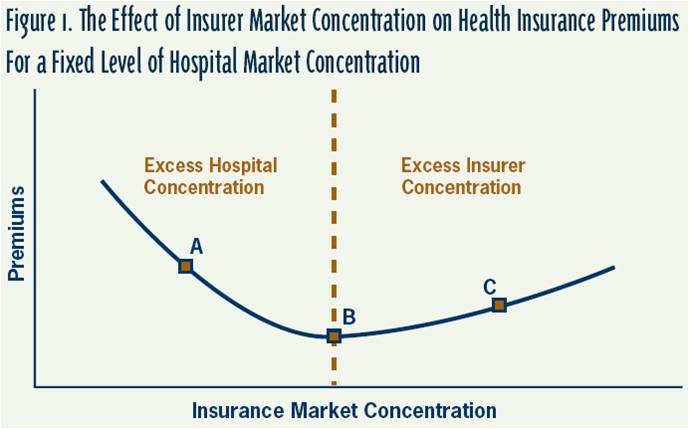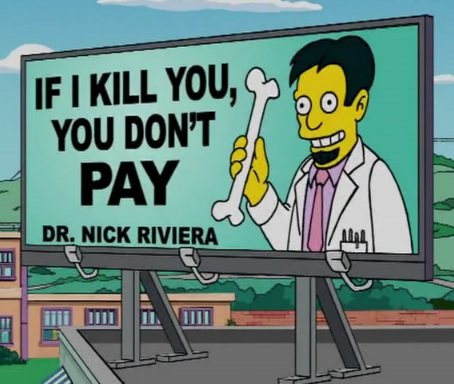I'm going to talk about the new Star Wars. Spoilers are a given.
I've been thinking back to a very old post, What Lies Ahead?, where I tried to boil down the various futures envisioned in sci-fi to a handful of archetypes. Star Wars is arguably not sci-fi per se but it strikes me that its world is in many ways a very soft version of what I dubbed "The Wasteland":
The WastelandStar Wars, of course, is not post-apocalyptic and isn't quite as grim as the sci-fi movies that employ this trope. But it is a story of what happens after The Fall, when evil vanquishes good and a once great republic gives way to the yoke of tyranny and oppression. What virtue remains is stored in the outlaws and marginalized under the new regime: declared enemies of the state long-since resigned to seclusion; moisture farmers living beyond the reach of the Empire but not beyond that of local gangsters like the Hutts who rule their world; rebels living the smugglers' life in ice caves. (Far from a unique circumstance in sci-fi: think of Firefly's losers of the Unification War, the Browncoats, who drift into ever less civilized outer reaches of their solar system.)
This future inherently assumes that the hubris of man will lead to his downfall. In The Wasteland, the human race has been partially or mostly destroyed and the remnants of humanity are locked in a constant struggle for survival. In most incarnations, it is the inevitable outcome of the Technocracy. For example, in Terminator and The Matrix the creation of advanced artificial intelligence ultimately backfires and leads to the destruction of much of the human race. In 12 Monkeys, human tampering with dangerous viruses kills most of the population and drives the survivors to a primitive existence underground.
The Wasteland is invariably post-apocalyptic. Regardless of whether he retains a measure of technological prowess, man has regressed substantially. His (perhaps foolish) primary goal is to regain what has been lost, often without any clear conception of how he will prevent history from repeating itself. I would classify the future depicted in the original Planet of the Apes as The Wasteland because it contains numerous themes of rebuilding a fallen society (the astronauts' entire voyage is designed for such purposes: of the woman astronaut, Charlton Heston explains "She was to be the new Eve" and it seems clear he has similar designs on the mute future-human Nova).
What the original trilogy promised us was life after The Fall. Restoration of an idealized past (a more civilized age). Good once again triumphing over evil. But that was only part of the allure. We got to follow the hero's journey; the interruption of his frustrated and mundane existence by his call to adventure invited us to quench our thirst for the same. His growing awareness of his dormant greatness and unrealized potential--nay, his destiny--resonated because it struck a universal chord of aspiration in all of us. And magic, infinite in its amazingness and utility to our hero, was real! Luminous beings are we! (Not this crude matter.)
And we got to explore the redemption of a man, not just a society. Iconic as he was, ever physically imposing and sinister, the Vader of Episode IV was ultimately the mundane administrator of a fascist bureaucracy. He was Eichmann with magic powers. Only a mysterious past and hints of motivation beyond the mere banality of evil made him something more and gave momentum to his evolution and illumination in the subsequent films. The denouement of Luke and Vader's journeys coincided: the moment when Luke, justifiably declaring himself at last a Jedi ("...like my father before me") definitively rejected the allure of the Dark Side, offered forgiveness instead of retribution to his fallen father, and placed his fate in the hands of Palpatine and Vader.
But now with Episode VII our perceptions are forever altered. Because now we know. When we watch our heroes in their moment of elation and triumph on Endor we know, as perhaps we should've always suspected, that it was not to last. Their futures held only pain, failure, and ultimately loneliness. For Luke, the failure to resuscitate the Jedi Order, loss of his family, and self-imposed exile. For Han and Leia, the loss of a child and the deterioration of their relationship. Despite references to a new republic, the rise of a new fascist state and superweapon suggest ongoing civil war at best, a galactic failed state at worst.
Three decades have passed but our heroes are as we met them: Leia dogged in her dedication to the cause of the rebellion/resistance but alone; Han a dashing ne'er do well ruffian, alone save for his walking carpet; Luke once more relegated to a lonely galactic backwater, removed from events shaping the galaxy and once more staring toward the horizon (the twin sunset traded for an endless oceanscape). Their victories, their very existence now only the stuff of legends.
The parallels--or anti-parallels as the case may be--between the original trilogy and the new one are obvious and enjoyable. A new young hero has been called to unexpected greatness; a father offers forgiveness to a son (with much different results than the Luke-Vader analog); and a long journey is only just begun. It seems likely we will be treated now not only to the story of Rey's journey to mastering the Light Side, but the story of Kylo Ren's concurrent descent and mastery of the Dark side. And as fans of The Godfather know, the story of a man's descent into evil can be just as good.
But if, as many have noticed, Kylo Ren is what we wish Anakin had been in the prequels it's because his story promises to essentially be Anakin's (but better acted). Just as Rey's promises to be Luke's. Some have suggested that when Episode VII slipped beyond homage to rehash it damaged itself (see "Critics are going too easy on Star Wars: The Force Awakens"). And to be sure, this film and the journey it promises have reminded me of the immortal and oft-repeated line from the Battlestar Galactica reboot: All of this has happened before, and all of it will happen again. That isn't meant to be a criticism as that can be an important theme about the folly of man and the cyclicity of human events: indeed it's one that's often implicit in The Wasteland concept I mentioned above.
What's intriguing is the possibility that the Jedi, purveyors of the universal Force, are in fact the truest embodiment of the relativist absurd man in the Star Wars universe. Camus famously compared the plight of the man trapped in a seemingly meaningless universe to the mythical Sisyphus, doomed to roll the same rock up a mountain over and over for all eternity. The only palatable choice is to recognize the absurdity and continue the struggle anyway.
All Sisyphus’ silent joy is contained therein. His fate belongs to him. His rock is his thing. Likewise, the absurd man, when he contemplates his torment, silences all the idols. In the universe suddenly restored to its silence, the myriad wondering little voices of the earth rise up. Unconscious, secret calls, invitations from all the faces, they are the necessary reverse and price of victory. There is no sun without shadow, and it is essential to know the night. The absurd man says yes and his effort will henceforth be unceasing. If there is a personal fate, there is no higher destiny, or at least there is but one which he concludes is inevitable and despicable. For the rest, he knows himself to be the master of his days. At that subtle moment when man glances backward over his life, Sisyphus returning toward his rock, in that slight pivoting he contemplates that series of unrelated actions which becomes his fate, created by him, combined under his memory’s eye and soon sealed by his death. Thus, convinced of the wholly human origin of all that is human, a blind man eager to see who knows that the night has no end, he is still on the go. The rock is still rolling.
I leave Sisyphus at the foot of the mountain! One always finds one’s burden again. But Sisyphus teaches the higher fidelity that negates the gods and raises rocks. He too concludes that all is well. This universe henceforth without a master seems to him neither sterile nor futile. Each atom of that stone, each mineral flake of that night-filled mountain, in itself forms a world. The struggle itself toward the heights is enough to fill a mans heart. One must imagine Sisyphus happy.
Perhaps the Jedi penchant for retreating into exile when confronted with the futility of eradicating the Dark Side, only to re-emerge and continue the struggle by training a new generation, is indicative of a long reflection culminating in the realization of the absurd. Each must fail and learn the lesson anew.
While Leia toils with the conviction her foe can be toppled and Han returns to his meaningless diversion, smuggling, ("the only thing I was ever any good at"), Luke has apparently returned to the site of the original Jedi temple for reasons not yet clear. Has he realized the value of pushing his rock up the mountain, even knowing it will just fall to the bottom again, in time to train Rey? Will he return to raising rocks?
Because we know--and reflecting on the events after the "happy ending" of Return of the Jedi only drives the painful point home--that the Dark Side can only be temporarily defeated. And because the Light and Dark Sides of the force are inexorably entangled with the political fate of the galaxy, that means the Wars can never really end. Surely Luke's failure with his nephew has given him clarity on this point. (Contra the title of Episode IV, "[The absurd man] knows simply that in that alert awareness there is no further place for hope," as Camus put it.)
Now the question is where the franchise goes next (somewhere new? can it?) to engage us in the struggle anew.













